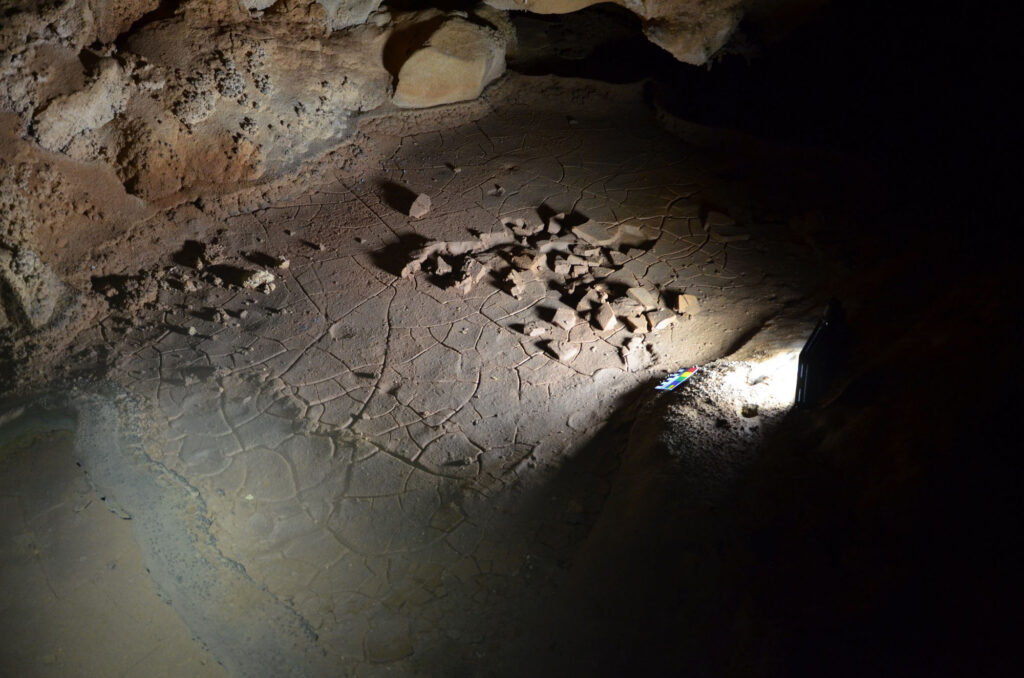Children Playing In Mud In Cave 16,500 Years Ago Left Behind Footprints That Have Survived All This Time
When a small group of children ran through the mud of this prehistoric cave they left behind footprints that have remained almost unchanged in the soft ground, until they were discovered recently an incredible 16,500 years later.
In total some two dozen human footprints from the palaeolithic period made by the children, probably when playing, thousands of years ago have been discovered at the UNESCO World Heritage Site cave.
The discovery was made by researchers from the University of Cantabria, the International Institute for Prehistoric Research of Cantabria and the Cantabria prehistory archaeology museum (MUPAC) at the La Garma cave complex in the northern Spanish province of Cantabria on 9th April.

In an exclusive interview with Real Press, Pablo Arias, Professor of Prehistoric Archaeology at the University of Cantabria, who has spent over two decades working on the La Garma cave complex described the discovery as “extraordinary”.
The research team uncovered 14 footprints that they think were left behind by children between the ages of 6-7 who were possibly playing in the cave.
Arias explained that footprints such as these are an extremely rare discovery with the only comparable example being the prints found in Tuc d’Audoubert cave in the French Pyrenees.

The footprints as seen in the picture are in an incredible condition which according to Arias is thanks to the stable climate found in the caves.
He said: “The footprints were found in an isolated part of the cave where the temperature remains incredibly stable only varying by one or two degrees between summer and winter”
He added: “Furthermore, due to their isolation from the outside world they have been protected from animals and as a result, they have kept their shape”

However, Arias also said that despite their impressive condition the prints are extremely delicate and require extreme care when being examined.
He said: “The footprints, despite being 16,500 years old, are still ‘fresh’, and as a result could be destroyed by someone simply stepping on them.”
The isolated location of the footprints has protected them for thousands of years but also made them very hard to access for the researchers.

Arias explained that the footprints were located 25 metres (82 feet) above the cave’s lower gallery which the researchers accessed through a 3-metre (9.8-foot) and 6-metre (19 foot) wide entrance.
The gallery was labelled Zone VII and upon entering the team led by Roberto Ontanon from MUPAC found a clay floor with several footprints.
In Zone VII the team confirmed that there were 14 footprints measuring 18 centimetres from toe to heel along with several other prints left behind solely by a heel and others they suspect are prints from elbows.
The La Garma cave system has become world-renowned amongst archaeologists for its contribution to our understanding of the Palaeolithic period and earned itself a place on the UNESCO World Heritage list.

Pablo Zuloaga, vice president of the Government of Cantabria, said in a statement obtained by Real Press that: “The La Garma cave system is one of the most important sites in the world for the knowledge of human behaviour in the Paleolithic period”
Arias agreed with the Vice President saying: “There is nowhere else in the world with the quality and variety of remains that we have in La Garma which is sure to continue providing us with archaeological surprises in the future.”
Arias added that much is still unclear about the discovery, such as how many children left the prints and what exactly they were doing in the cave.
One theory that has developed is that the child or group of children were playing in the cave when they made the prints.

He explained that this theory has been put forward due to the discovery of elbow marks and heel marks along with the footprints which suggest that the child who left them may have been jumping and crawling.
However, this theory is yet to be confirmed and according to Arias, a lot more research will be needed before a clearer picture of what was going on in the cave 16500-years-ago can be developed.
The research teams will now begin analysing the ancient prints using laser scanners, photogrammetry and high-resolution photography in order to build a more detailed understanding of them and the children who made them.



